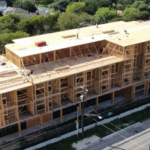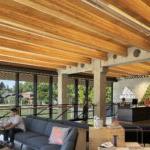Expert Tips
WBLCA工具中的生物碳核算
Part 3 in a series on biogenic carbon accounting for wood products – the nuances of different tools
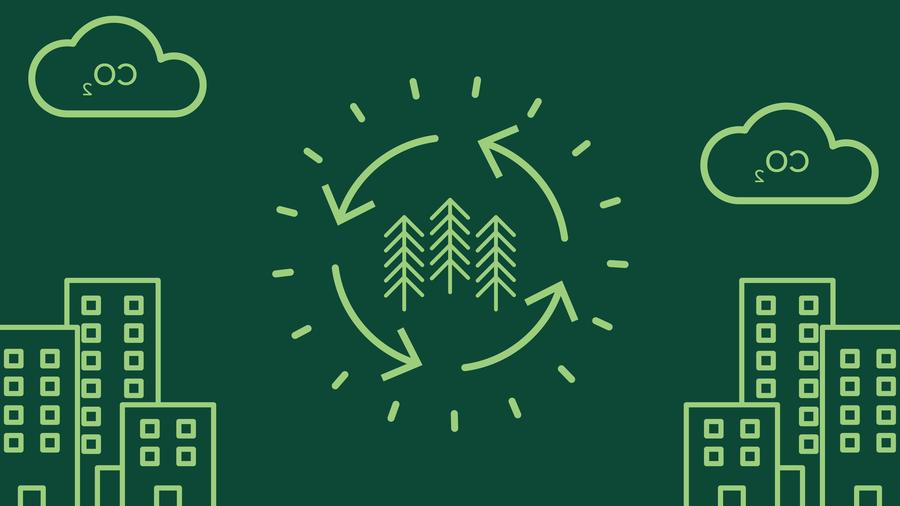
Updated January 2024
在阅读本文之前,请回顾第1部分。 何时在LCA中加入生物碳, and Part 2, 如何将生物碳纳入LCA. In this article, we’ll explore how biogenic carbon accounting is performed in three whole building life cycle assessment (WBLCA) tools.
Within WBLCA tools, designers sometimes have the option to “include” or “exclude” biogenic carbon flows. Generally speaking, “including biogenic carbon” means you are following the “-1 in/+1 out” biogenic carbon accounting practice in accordance with ISO 21930. As outlined in Part 1例如,当木材来自美国时,应包括生物碳流.S., Canada, or any other country with stable or increasing forest carbon stocks,1 或者当使用负责任的采购或认证木材时.2 当它被包括在内,所有的生物碳流提到 Part 2 应该在适当的模块中报告. In practice, however, each of the tools handles biogenic carbon in different ways.
Athena Impact Estimator
Note: In December 2023, the 雅典娜可持续材料研究所 released significant revisions to its LCA tool, 雅典娜建筑影响评估器. 以下信息基于此版本,即v5.5.
By default, the Athena Impact Estimator includes biogenic carbon flows that occur in each life cycle stage. Biogenic carbon enters the system in A1 and some biogenic carbon leaves the system in A3. In Module A5, 雅典娜应用基于材料和产品类型的浪费系数, 导致额外的生物碳进入和离开系统. 在模块C3-C4中,雅典娜使用了生命终结场景的混合:
- 72.6%的木制品被填埋.3
- 88%进入垃圾填埋场的生物碳被永久储存.
- 剩下的12%分解并释放回大气.
- 27.4% of the wood products are assumed to leave the product system for recycling or other use. All biogenic carbon stored in this material leaves the system as an emission or export.
这种生命终结场景的混合结果是 约64%的永久生物碳储存 而剩下的36%则被释放. These assumptions are set by the program and cannot be adjusted by the user.
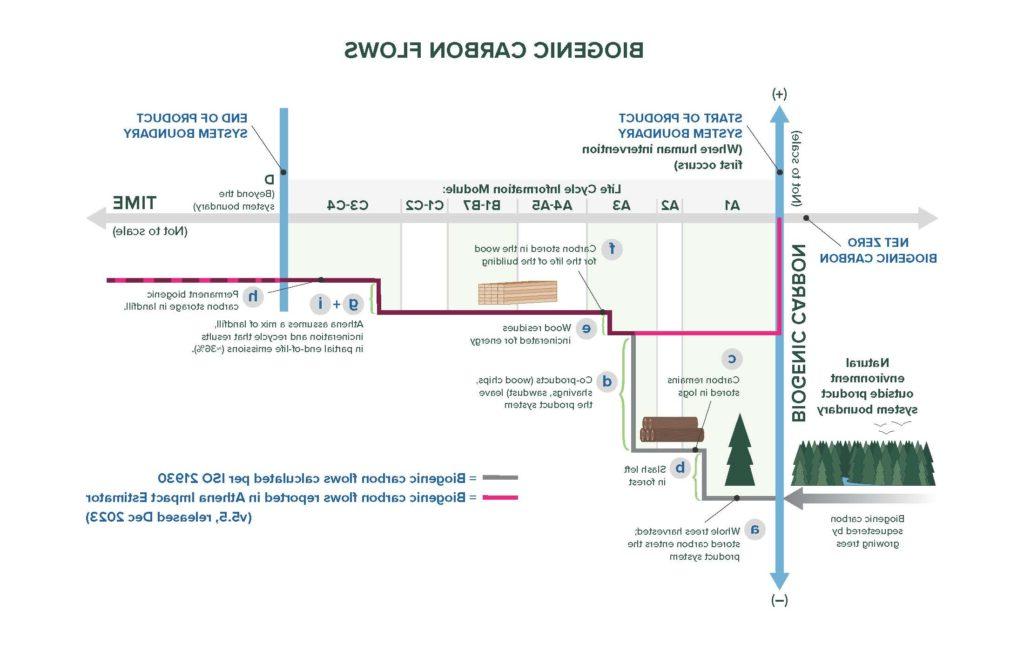
图1:Athena Impact Estimator中的生物碳报告 4
Click here 查看此图像的大图.
Tally
塔利为用户提供了包括或排除生物碳流的选择. As noted above, users should choose to “include” biogenic carbon to align with ISO standards. 当做出这个选择时, biogenic carbon enters the system in A1 and some biogenic carbon leaves the system in A3. The net value, 如图2中的f点所示, 包含在产品阶段(A1-A3)报告的GWP中。. As noted in Part 2 of this series, Tally assumes a default lifespan of 30 years for certain wood products5 在“使用”阶段(模块B). 此默认设置必须由用户手动更改, to reflect the fact that structural wood products are designed with a lifespan equal to that of the building.
For the end-of-life stage, 塔利还混合使用了三种场景, 尽管百分比与雅典娜的不同.
- 63.5%的木制品被填埋.
- 进入垃圾填埋场的50%的生物碳被永久储存.
- 剩下的50%分解并释放回大气.
- 22%的木制品被焚烧. All biogenic carbon stored in this material is released back to the atmosphere as an emission.
- 14.5%的木制品被回收利用. All biogenic carbon stored in this material leaves the system to be passed on to the next life cycle.
这是生命终结的场景 results in 31.75%永久生物碳储存如图2中的“h”点所示. The remaining 68.25%从系统中释放出来,用灰色线“g+i”表示.” These assumptions are set by the program and cannot be adjusted by the user. Note, however, that Tally reports only the emissions associated with landfill and incineration in Module C1-C4. Biogenic carbon that leaves the product system due to recycling is reported in Module D, 如粉色线所示. Module D also includes other benefits and impacts such as energy recovery and use of that energy to offset energy from the grid, not shown. It is difficult to disaggregate this data to determine only the portion of biogenic carbon that leaves the system through recycling to be passed on to the next system.
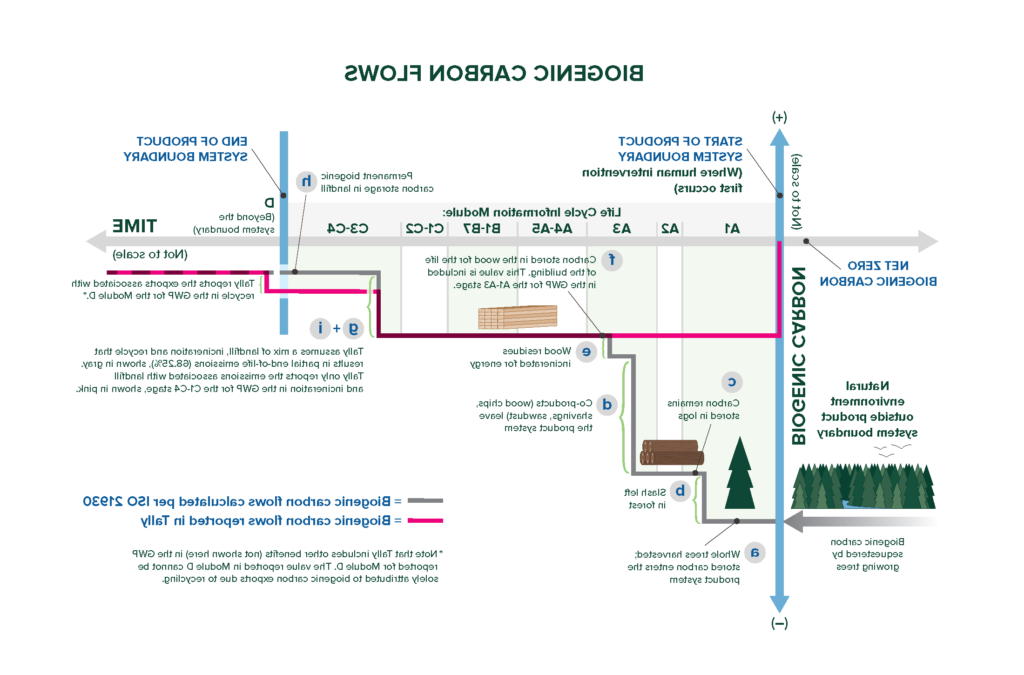
Figure 2: Biogenic Carbon Reporting in Tally (when biogenic carbon is included)4
Click here 查看此图像的大图.
When biogenic carbon is excluded in Tally, no credit is given in Module A1 for the biogenic carbon stored in the log when it enters the system. Similarly, 当木制品离开系统或被焚烧时, biogenic carbon emissions are not reported; however, 垃圾填埋场分解产生的生物甲烷排放仍有报道. Because biogenic carbon flows are not reported, there is no permanent biogenic carbon storage.
OneClick LCA
OneClick calculates the amount of biogenic carbon stored in the wood products but does not report biogenic carbon flows over the life cycle, 它也不包括总体全球变暖潜能值中的生物碳. Biogenic carbon enters the system in A1 and some biogenic carbon leaves the system in A3. In Module C3, the default assumption is that 100% of biogenic carbon within the system is emitted. In other words, OneClick 不包括任何永久的生物碳储存, regardless of whether the default or a custom end-of-life scenario is used. 因为OneClick在报告的全球变暖潜能值中没有包括生物碳, 生物碳流(-1进/+1出)不报告在每个模块. Rather, the amount of biogenic carbon stored in the wood products is reported separately in Modules A1-A3 and is assumed to be stored for the life of the building. 图3中的“f”点描述了这一点.
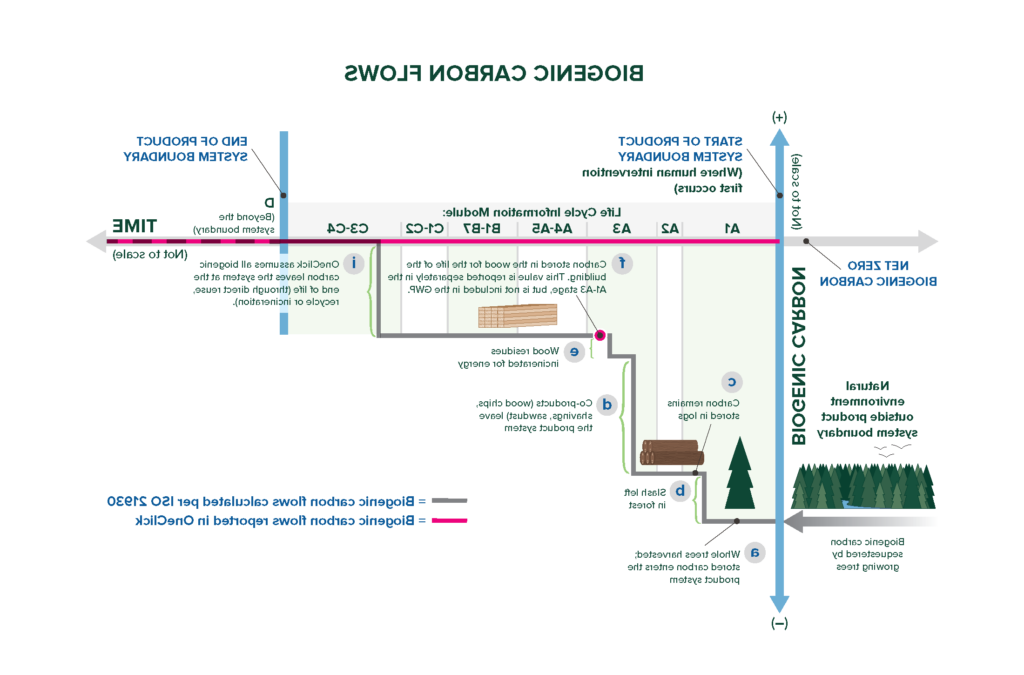
图3:OneClick LCA中的生物碳报告4
Click here 查看此图像的大图.
While there are differences in reporting methodologies and assumptions between different WBLCA tools, designers should look for tools—and options within those tools—that include biogenic carbon flows in accordance with ISO 21930. 应该考虑生命终结的情况, as these can have significant effects on the reported amount of permanently stored biogenic carbon. Additionally, tool users should be familiar with default material lifespans within each tool and adjust as necessary to ensure accurate results.
Additional Resources:
雅典娜可持续材料研究所. (2023, December). 用户手册和透明度文件:建筑物影响评估器.5.5.
国际标准化组织. (2017). ISO 21930:2017 Sustainability in buildings and civil engineering works – Core rules for environmental product declarations of construction products and services.
Kwok, A. G., Zalusky, H., Rasmussen, L., Rivera, I., & McKay, H. 塔尔伍德设计院. (2019). 交叉层压木结构建筑:WBLCA案例研究系列.
One Click LCA. (2022, February). 一键LCA帮助中心:生物碳.
Skog, K. E. (2008). 为美国在采伐的木材产品中封存碳. Forest Products Journal. Vol. 58, no. 6; 56-72.
Wildnauer, M. KT Innovations. (2018, October). 塔利2019网络研讨会系列:生物碳.
1 ISO 21930 Section 7.2.11 Note 2
2 ISO 21930 Section 7.2.11
3 EPA. 推进可持续材料管理:2018年简报. (2020, December). Table 8.
4 有关此图的进一步解释,请参见 Part 2 of this series on biogenic carbon accounting over the life cycle of a wood product.
5 计数教程,“定义材料”从0:02:33开始, http://choosetally.com/tutorials/


